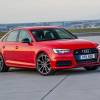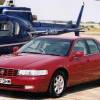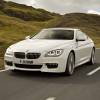
RAC sale – up to 33% off*
• Roadside cover from £5.29 a month†
• We get to most breakdowns in 60 mins or less
• Our patrols fix 4/5 breakdowns on the spot

BY ANDY ENRIGHT
Introduction
The Alfa Romeo 166 is the car which finally put the ghost of woeful big Alfas to rest. In fact, so good was the impression created upon launch that for the first time in years, nobody could recall an "Alfa's Last Chance Saloon" cliche being inflicted on the 166. Part of this was due to the rehabilitation of Alfa's image by the celebrated 156 model, only a year out of the box at the time of the 166's launch. Nonetheless, the 166 is the first big Alfa Romeo that can honestly be recommended as a used purchase, which speaks volumes about the regard in which it is held by the motor industry.
Models
Models Covered:
4 Dr Saloon [2.0, 2.5, 3.0 petrol (TS, Super, Lusso)]
History
The Alfa 166 is rumoured to have had a troubled genesis. Few realise that the 166 was designed before the 156, having been almost signed off for production at the end of 1994. At that time, Alfa Romeo sales were flagging, and the project was shelved in order to concentrate on the development and launch of the 156 model. In order to keep the design fresh, Alfa Romeo made a series of modifications to the Lancia Kappa based underpinnings, radically changing the suspension set up and also taking a clean paper approach to the interior. Tales of countless wrangles concerning the exterior styling are legion, but when the car first appeared on British shores in early 1999, many agreed that it was the best-looking big saloon on the market.
When it was launched in the UK, there was a choice of three engines, the familiar four-cylinder 2.0-litre Twin Spark, a 2.5-litre V6, and the classic 3.0-litre V6 that Alfisti the world over revere like no other. Five different models were available, 2.0-litre manual, 2.5-litre manual, 2.5-litre Sportronic, 3.0 Super manual and 3.0-litre Sportronic. In late 1999, luxury Lusso versions were added to the range.
There was a facelift late on in 2003 but we never got the diesel engine in the UK that was available across the rest of Europe. By the later stages of 2005, it had been decided not to upgrade the 3.0-litre V6 unit to meet the Euro IV emissions regulations and in the absence of a diesel, this effectively spelt the end for the 166 in this country.
What You Get
The Alfa 166 is not the most spacious contender in its class. What's perhaps surprising given the transversely mounted front engine layout is that rear passengers will get that charter flight feeling of claustrophobia. Rear leg and headroom isn't great, but up front the reverse is true. The driving seat, especially if it's trimmed in the gorgeous Momo leather, is where you'll want to be. The boot's quite a good size, but in terms of overall packaging, the Alfa would come a distant second to a Volvo S80 or BMW 5 series of the same era.
Equipment levels are generally high. The top spec Lusso models provide leather upholstery and electrically adjusted front seats amongst other enhancements. Interestingly, the Italians resisted the temptation to follow the competition by decorating the cabin with wood; they would like you to think this car to be above all that. Instead, the money was spent on a couple of useful driving aids. Dominating the fascia is a new Siemens-designed 'Integrated Control System'. This centre-console-mounted screen handles the stereo, climate control and (where fitted) satellite navigation system, standardising the kind of technology that cost thousands extra in the opposition.
The same thinking drove the development of a new electronically controlled Sportronic automatic gearbox. In one mode, a sophisticated 'brain' selects a pre-determined gearshift pattern based on your current driving style. In another, a 'Tiptronic'-style system enables you to flick the lever up and down to determine your own changes.
Nor does the technology stop there. A glance at the equipment list reveals a positive forest of acronyms: Electronic Brake Distribution (EBD), a Traction Control System (TCS), Anti-Slip Regulation (ASR) and of course, four-channel Bosch ABS. Powerful Xenon headlamps offer impressive lighting capacity; rain-sensitive wipers make mixed conditions more relaxing. Even the wheelarches are trimmed with special sound-deadening material to prevent road debris making a noise as it clouts the inner arches. A lot of thought went into this car. The result, to Alfa's credit, is a saloon that stays true to its maker's traditions without following them blindly. Many owners of rival models are in for a shock if they can be persuaded behind the wheel.
What You Pay
Please fill in the form here for an exact up-to-date information.
What to Look For
The reliability record of the 166 has been excellent. The fit and finish of the cabin and general attention to detail appears good, although bigger mileage examples may show up some failings. Check the front tyres for wear and check the suspension bushings on the V6-engined models. These V6 cars are also known to have a thirst for oil.
Replacement Parts
(based on a 2.0 Twin Spark) For a new clutch you're looking at £178, front and rear brake pads are around £65 and £45 respectively and a new offside headlamp will be in the region of £161. A replacement air filter is around £23, an oil filter £8, whilst spark plugs will cost approximately £22. A cam belt retails at around £30.
On the Road
Sitting behind the wheel, there's a classic Italian feel to the fascia, although thankfully the traditional Italian driving position is notable by its absence. As with most Alfa Romeos, the smaller engined models handle more fluently than those with a hunk of V6 in the nose, and the 166 is no exception. Whilst the additional weight of the 166 2.0 Twin Spark robs it of the zest of the similarly-engined 156, it still handles remarkably well. With only 2.2 turns lock to lock, the steering is almost telepathically quick, although it also reverts in a massive turning circle.
Rest to 60 comes up in 9.3 seconds in the 2.0-litre car, as opposed to 8.6 and 7.7 seconds respectively in the 2.5 and 3.0-litre V6 cars. Ride comfort is very good at low speeds, although at higher motorway speeds there's a fair degree of float which can feel slightly disconcerting in bad conditions. All models benefit from clever, patented multi-link rear suspension that set class standards for handling if not in terms of ride.
For the serious Alfa fan, nothing but the beautiful 3.0-litre V6 will do. This is one of the few cars around of its era that have engines that look like engines should, polished pipes, crackle finish cam covers and so on. Lift the bonnet of most modern cars and you're usually confronted by something that looks like a tumble dryer's innards, a wheelie bin lid or a disembowelled hi-fi. The V6 also sounds magnificent. Drive it as it demands and you could return 14mpg, but on a touring route you'll achieve 24mpg, still way short of what can be expected of a BMW 528i. Performance is appropriately lusty, but the weight in the nose makes turn-in slightly slow and also exacts a penalty when driven on undulating roads, the suspension sometimes getting slightly out of phase, crashing against the bump stops when it finally runs out of answers.
Overall
That the Alfa Romeo 166 is a bit of a flawed diamond is unquestionable. The difference between this car and big Alfas before it is that unlike catastrophic reliability and residual values, the Alfa 166's faults are relatively minor and will deter fewer people than the astonishingly sexy styling attracts. The problem is that the market it competes in contains some incredibly competent offerings from BMW, Audi and Volvo. If you do opt to make your neighbourhood a more beautiful place, then putting a used Alfa 166 on your driveway is one of the most enjoyable ways of doing it.







